
Researchers have modeled the fluid dynamics of multi-rotor wind turbines, and how they interact in wind farms; the research demonstrates a clear advantage for a turbine model with four rotors.
Researchers have modeled the fluid dynamics of multi-rotor wind turbines, and how they interact in wind farms. The research demonstrates a clear advantage for a turbine model with four rotors.
With their 220-meter (722-foot) diameter, the wind turbines at the future Dogger Bank wind farm in the North Sea are the world’s largest yet. But large, larger, largest is not necessarily the best when it comes to wind turbines.
Researchers from Aarhus University and Durham University in the UK have now modeled the fluid dynamics of multi-rotor wind turbines via high-resolution numerical simulations, and it turns out that wind turbines with four rotors on one foundation have a number of advantages.

Assistant Professor Mahdi Abkar, department of engineering, Aarhus University. Credit: Lars Kruse, AU Photo
A wind turbine harvests energy from the incoming wind, but when the wind passes through the blades of the turbine, a region with lower wind speeds and higher turbulence is created called wind turbine wake. A second wind turbine downstream is affected by this turbulence in several ways. First of all, it produces less energy, and secondly, the structural load is increased.
“In the study, we found that turbulence and currents in the wake of the turbines recover much faster with multi-rotor turbines. This means that, with multi-rotors, a second turbine downstream will produce more energy and will be subjected to less load and stress, because the turbulence is correspondingly smaller,” says Mahdi Abkar, assistant professor at the Department of Engineering, Aarhus University and an expert in flow physics and turbulence.
Less cost, less hassle, more energy
A wind turbine with more than one rotor creates less turbulence, and the wind is “restored” faster, which means a higher energy output. And this is important knowledge at a time when wind turbines are becoming increasingly larger, and thereby also increasingly expensive.
“You can always increase your energy output by increasing the diameter of the rotor blades, but there are major structural challenges in building these massive constructions with diameters exceeding 150 meters (500 feet). The material requirements increase, the transport of the structures is cumbersome and expensive, and it becomes more costly to maintain the wind turbines,” says Mahdi Abkar.
A turbine with four rotors costs approximately 15% less to construct than a turbine with one rotor, even though the blades cover the same area in total. At the same time, a construction with four rotors is much lighter and therefore easier to transport. And if one of the rotors stops working, the rest of the turbine will still produce energy, unlike ordinary wind turbines.
In addition, the researchers have found that individual multi-rotor turbines actually produce slightly more energy than single-rotor turbines: approximately 2% more.
“We’ve explored several different geometries and dynamics of multi-rotor turbines and have found that the optimum construction is a turbine with four rotors as far apart as possible. The latter results in less downstream turbulence and a faster stabilization of the wake behind the wind turbines,” says Assistant Professor Mahdi Abkar.
Reference: “Multirotor wind turbine wakes” by Majid Bastankhah and Mahdi Abkar, 6 August 2019, Physics of Fluids.
DOI: 10.1063/1.5097285

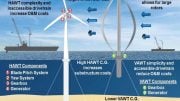
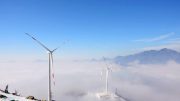
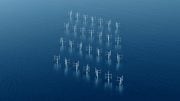
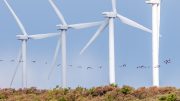
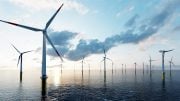
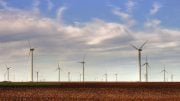
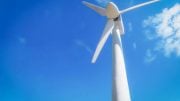
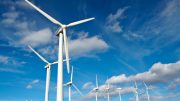
Are all four rotors on the same axis? A recent study found that rotors that are turned 10° off of wind direction produced dramatically more electricity.
These were standalone units, and I don’t recall whether the study measured any effects on downwind units.
It might be interesting to use that data to simulate four units in a line, but each one aligned 10° off of that line.
(or other suitable angle.)
They would not have a common shaft, but they may be
coupled to each other on a common structure if that appeared to lead to an improvement.
Good luck!
No diagram? Several claims with nothing to support those claims.
Are these arranged as two sets of contra-rotating sets of blades then?
100 year old betz limiits phyics? Claiming all wind inventions loses over 1/2 between blades, when in fact my designs can be both horizontaly and vertically
deployed have no pass threw loss .are entirely dependant on einestine equal and opposite reactions. Exists now the magneticaly controled bearings will allow the conversation of angular momentum to open and close simontaniousely produceing light speed wobble then infinte values.
Most importantly, does this design reduce or increase infrasound and low frequency noise? Research shows ILFN negatively affects the health of people. Those who suffer from motion sickness are most likely to have noticeable symptoms. That represents 20 to 30 percent of population.
Lead and mercury poisoning from burning coal increase damage to the nervous system 1100% greater than ILFN. Those you have brains are most likely to have noticeable symptoms. That represents 100 percent of the population.
Wind Power provides a huge health benefit by averting dirty fossil fuel pollution.
“No diagram? Several claims with nothing to support those claims.”
These are bogus claims. Who is funding this misinformation?